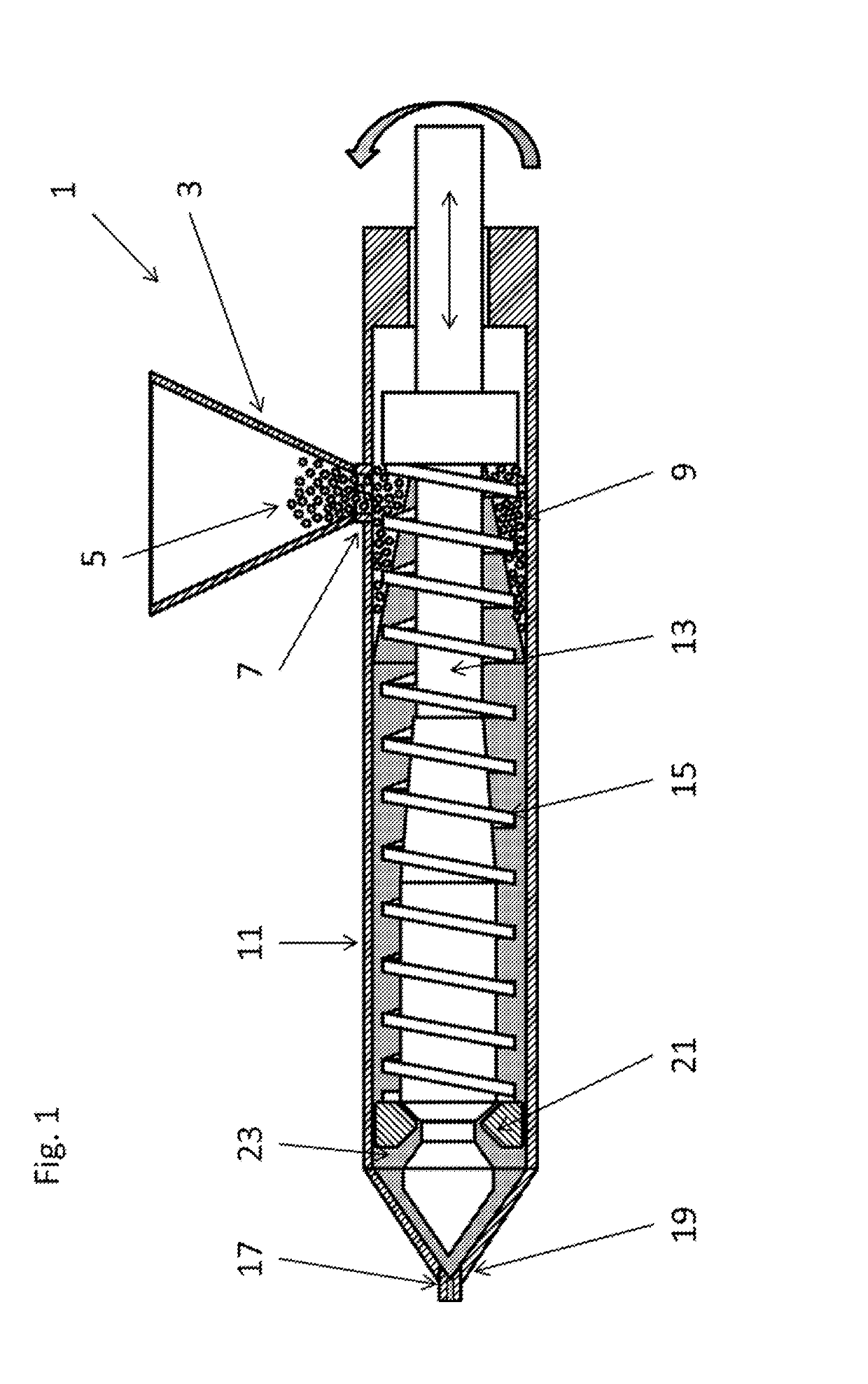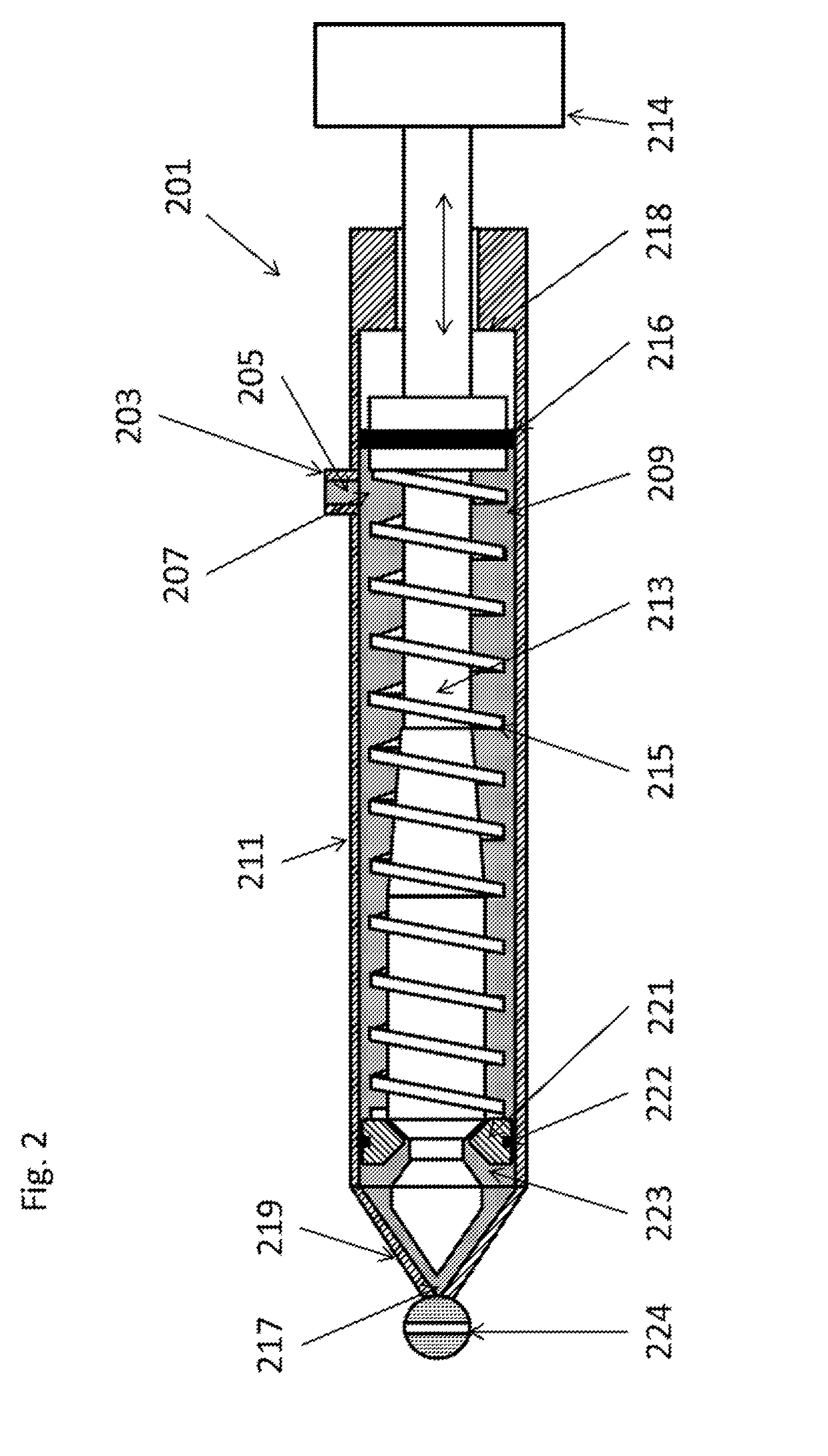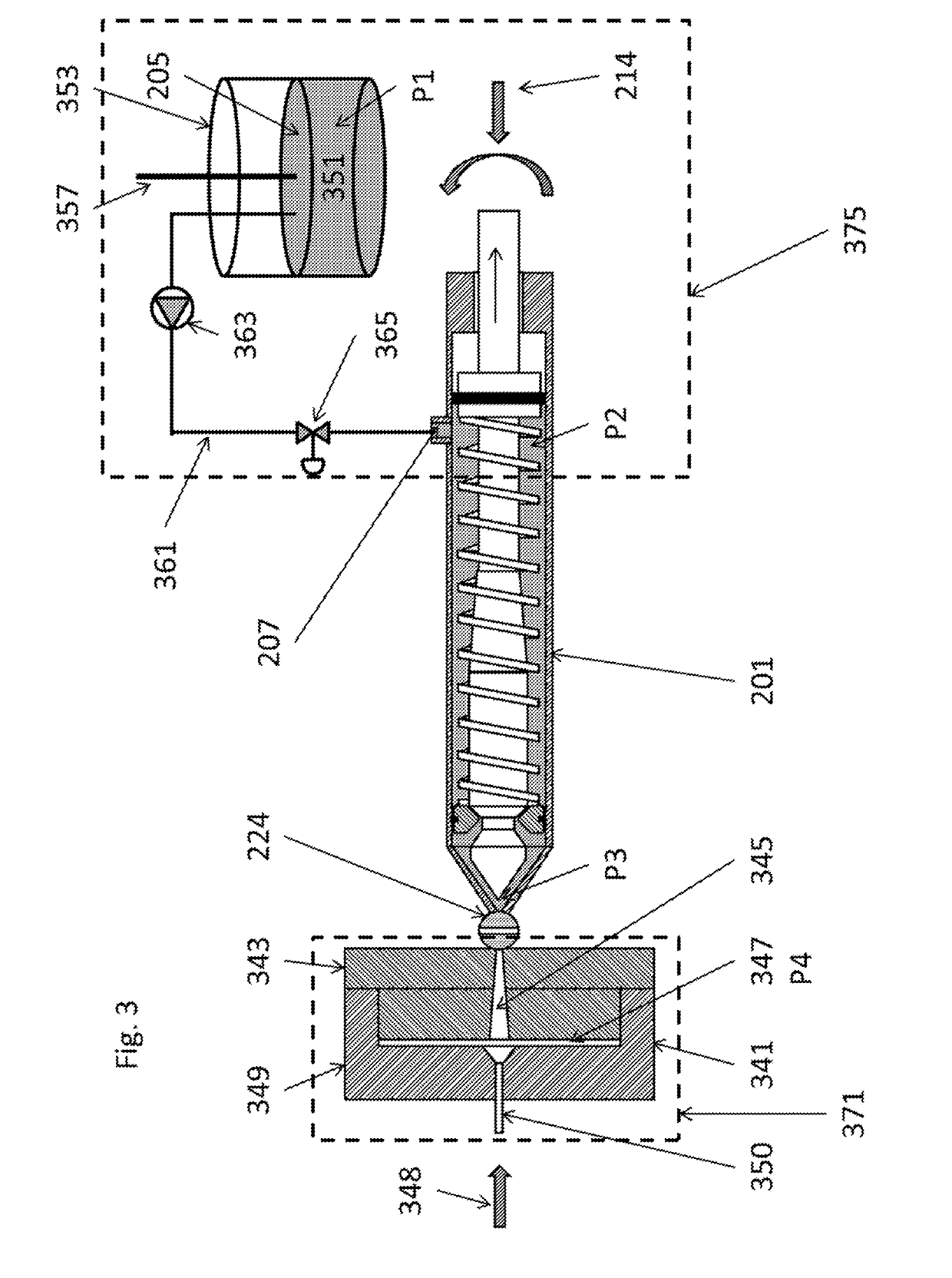Apparatus and method for the production of expanded foam embryos
a technology of expanded foam and embryos, applied in the field of apparatus and process for the production of cellular and expanded materials, can solve the problems of large amount of energy, loss of most of energy, and complicated industrial practice of this batch process, and achieve the effects of less energy, sufficient viscosity, and preventing premature foaming of the mel
- Summary
- Abstract
- Description
- Claims
- Application Information
AI Technical Summary
Benefits of technology
Problems solved by technology
Method used
Image
Examples
example 1
Sample 1 was prepared according to:
Plastisol Content:
[0106]
ContentComponents(weight %)sPVC15.1%ePVC30.8%Anhydride10.0%Isocyanate (CDMDI / pMDI)39.6%Blowing agent (AZDN / ADC)4.4%Processing aids (lubricants)0.1%
[0107]The PVC in this experiment comprised two different PVCs, sPVC is a suspension polymerized PVC and ePVC is an emulusion polymerized PVC.
[0108]The anhydride is preferably cyclic dicarboxylic anhydride, e.g. phtalic anhydride or preferably a 70 / 30 mix of cyclohexane-1,2-dicarboxylic anhydride and 4-methyl-hexahydrophtalic anhydride that is liquid at room temperature. The Isocyanate is preferably based on liquid versions of diphenylmethane-4,4′-diisocyanates (4,4′-MDI), e.g. CDMDI (carbodiimide modified 4,4′-MDI) and polymeric MDI (pMDI), pure or as a mix. The lubricant is hydrocarbon wax.
[0109]
Injection unitPlastisol temperature20°C.Inlet zone20°C.Feeding zone100°C.Compression zone120°C.Melt zone140°C.Melt-reserving section165°C.Cylinder tip and hot runner system165°C.Mould uni...
example 2
[0112]Examples (denoted Example 1-14) using other compositions and set ups are disclosed in FIG. 17. In said examples plastisols comprising ePVC, sPVC, SAN and PMMA-co-PBMA have been used.
[0113]Briefly the method was performed as described above at the conditions stated in FIG. 17. As polymeric powder mixtures of ePVC (5.8-30.8%) and SPVC (15.1-41.0%) were used, or sPVC (34%), or PMMA-co-PBMA (5.8-45.5%), or SAN (5.8-45.5%). Anhydride (4-11.9%), blowing agent (2.5-4.4%), MDI (39.4-50.0%), lubricant (0.1%) and surfactant (0-0.5%) were also used.
[0114]Density, compression strength, compression modulus and cell size was determined for each sample.
PUM
| Property | Measurement | Unit |
|---|---|---|
| cell size | aaaaa | aaaaa |
| density | aaaaa | aaaaa |
| density | aaaaa | aaaaa |
Abstract
Description
Claims
Application Information
 Login to View More
Login to View More - R&D
- Intellectual Property
- Life Sciences
- Materials
- Tech Scout
- Unparalleled Data Quality
- Higher Quality Content
- 60% Fewer Hallucinations
Browse by: Latest US Patents, China's latest patents, Technical Efficacy Thesaurus, Application Domain, Technology Topic, Popular Technical Reports.
© 2025 PatSnap. All rights reserved.Legal|Privacy policy|Modern Slavery Act Transparency Statement|Sitemap|About US| Contact US: help@patsnap.com



